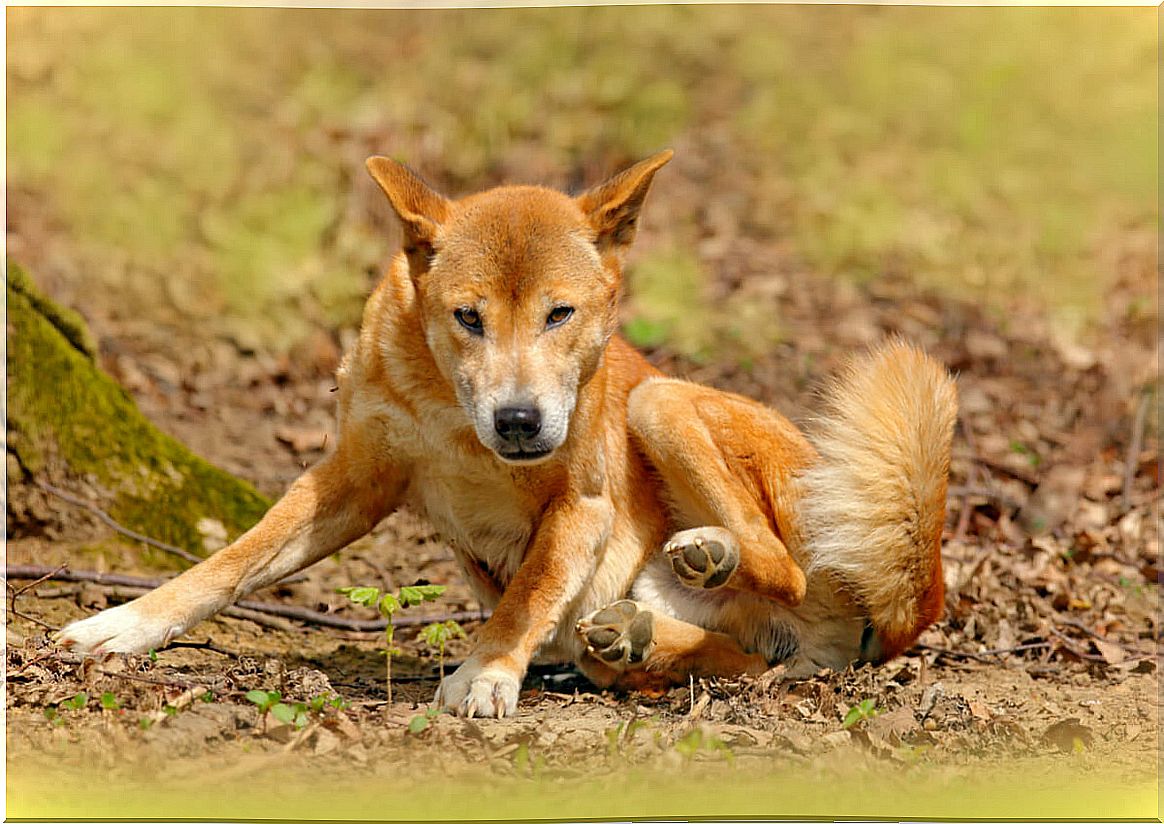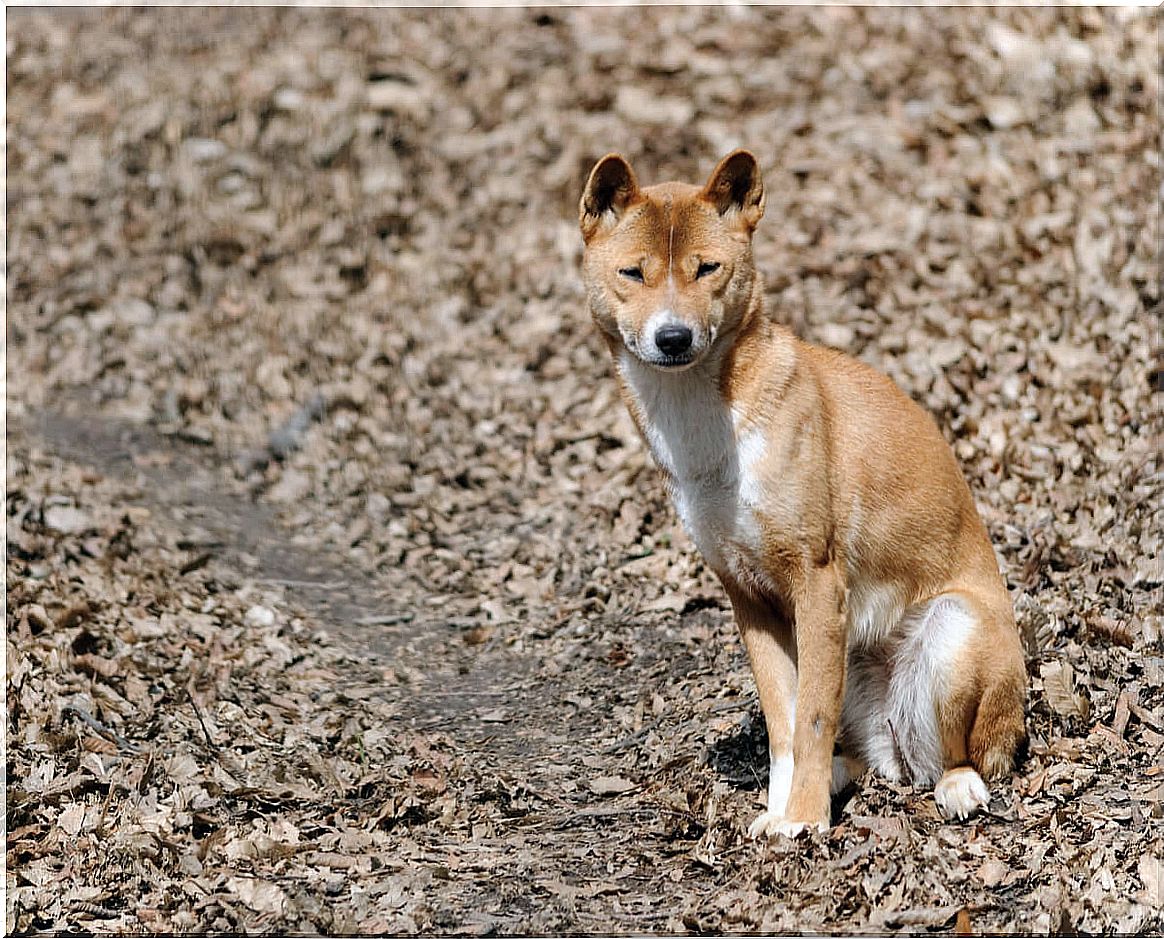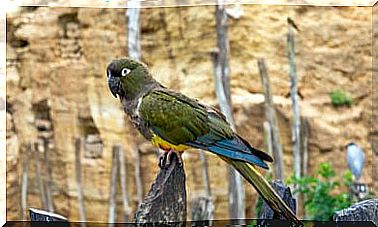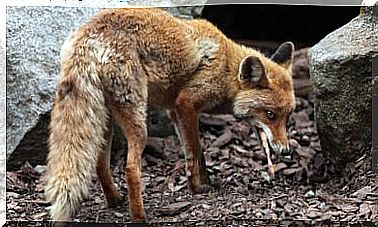The New Guinea Singing Dog Is Not Extinct

For decades we have heard of curious animals that end up becoming extinct, as was the case – until now – of the New Guinea singing dog. Fortunately, in September 2020 it was documented that this species was not extinct, as was originally believed.
Do you know any information about the singing dog? Do you know how it has escaped extinction? If the answer is no, no problem. Next we will talk about this peculiar animal and its gift.
The New Guinea Singing Dog Resists
According to a news item published on September 3, 2020, the New Guinea singing dog has been found again. We are facing an event of vital ecosystem importance, since it was believed that this species had become extinct in nature at the beginning of the 20th century.
However, sources cite that wild specimens of this breed of dog were sighted in 2016 in their habitat. Specifically, 15 individuals were located in eastern New Guinea, in Indonesia.
This is great news for the rest of the descendants of the species present in zoos or conservation centers, since new wild individuals have been found, the inbreeding of captive specimens can be counteracted.
However, a second expedition was necessary in 2018 to collect biological samples from the animals. The objective was to genetically analyze the animals and confirm whether the species found really corresponded to the singing dog taxon.
Although the answer was affirmative, we must highlight the fact that its genome only matches 70% with the original wild species. Experts suspect that this is due to a cross with eight types of American dogs over several generations.

Likewise, the 2018 expedition made it possible to produce a report on the physiological measurements of the dogs. Thanks to this continuous monitoring, the researchers have been able to gather information on the state of health and body condition of the wild specimens.
The task of the experts did not end here, since they also added GPS locators to two animals to be able to know their movements and habits. Of course, monitoring these wild dogs in every way was essential to prevent their disappearance again.
Thanks to the research, it is hoped to be able to generate a true population of New Guinea song dogs. With care and appropriate measures, it is hoped that this exotic animal – as well as its unique sound – can be enjoyed in the wild in a few years.
Curiosities about the New Guinea singing dog
Once we have shown you the news of interest, we see fit to collect some typical characteristics of this fascinating canid.
Source
The New Guinea singing dog is scientifically named Canis lupus hallstromi or Canis familiaris hallstromi . This canid is native to New Guinea, as its common name indicates.
Specifically, this canid is present in the western half of New Guinea, which belongs to Indonesia. This half is called Papua and specimens of the species were recorded in writing for the first time in 1897.
The discovery of individuals of this species is a joy for the population of the island, since it was feared that the New Guinea song dog breed had become extinct due to:
- Loss of habitat.
- Crossbreeds with the wild dogs of the villages.
Regarding their phylogenetic position, it seems that these dogs are related to the dingo. This implies that, at an evolutionary level, they appeared in the tree of life before today’s dogs.
Knowing the particularities of these more “ancestral” species is a way to complete the current knowledge about the ancient precursors of domestic dogs, and consequently, of the different breeds of dogs that inhabit homes around the world today. .
Behavior
After studying their habits, it has been concluded that these dogs are extremely intelligent, as they have been able to adapt to the changes that their habitat has undergone over the decades.
Another striking feature of this animal is its appreciation for high places, as it has good climbing abilities. Likewise, it is curious to know that these dogs make a specific head turn to communicate with each other.
They not only use their heads for this, as their long, curved and moving tails are involved in communication. Thanks also to their fur and pattern, they are able to be identified from afar.
Do they really sing?
Although this animal is called the New Guinea singing dog, we have to explain the reason for this curious nickname. The howl of this dog is similar to that of wolves, but it has a unique characteristic.
In this characteristic resides its authenticity, since these dogs have the ability to modulate their own howl. By being able to control the pitch of its vocalizations, it appears that the animal sings when it howls.
Therefore, although we tend to humanize the striking features of some animals, their names cannot be taken literally. However, compared to the rest of the members of the genus Canis , this species does sing in some way.

As we have seen, some animals that were believed to be extinct may not really be. This has been the case with the New Guinea singing dog, which was considered missing since the mid-20th century.
Luckily, to this day, genetically stable populations continue to be found in nature as far as this species is concerned. Now it is our turn to act, as we must prevent their disappearance.









